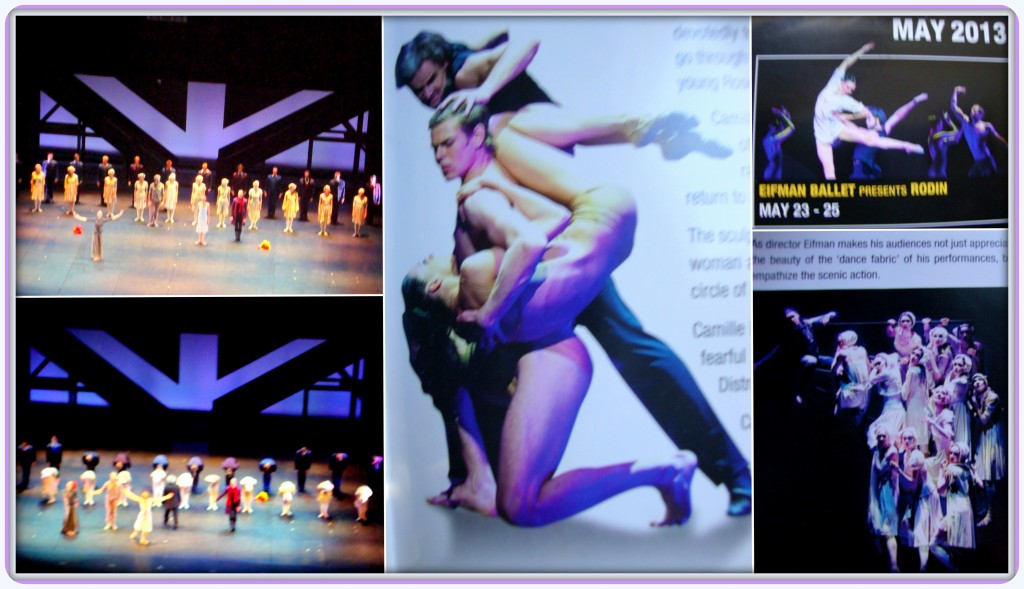Talk about dance? Dance is not something to talk about. Dance is to dance. -Peter Saint James-
 Going to the ballet is always a fun way for me to spend an evening. For most ballet lovers, it’s usually the traditional ballet classics that one doesn’t want to miss. I was in the mood for something different last week when the Eifman Ballet from St. Petersburg, Russia, was in Toronto, and so it was that I saw Eifman’s “Rodin.” The pictures in this collage are photographed from the program except for two which I took while the performers were taking their last bows.
Going to the ballet is always a fun way for me to spend an evening. For most ballet lovers, it’s usually the traditional ballet classics that one doesn’t want to miss. I was in the mood for something different last week when the Eifman Ballet from St. Petersburg, Russia, was in Toronto, and so it was that I saw Eifman’s “Rodin.” The pictures in this collage are photographed from the program except for two which I took while the performers were taking their last bows.
There were over fifty talented dancers in this performance and the lighting and the staging enhanced their brilliant technique. The music was magnificent and included compositions by Ravel, Saint-Saens, Debussy, Massenet and Satie.
According to the program notes, “Boris Eifman is a choreographer-philosopher. He is concerned with the problems of the modern world; with the secrets of creativity and the magic of geniuses,which uncover themselves in his interpretation of the fates of Tchaikovsky, Spesivtseva, Moliere, or Rodin. He makes experiments with such dark and fearful spheres as the human psyche (Idiot, Murderers, I, Don Quixote, Russian Hamlet, and Anna Karenina) creating the images of stage psychoanalysis.” This was my first modern ballet that covered such deep emotions. I had not known the term “psychological ballet” before this performance.
Rodin and Claudel, his mistress, were both amazing artists – he a marble sculptor and she a bronze. She was a great inspiration to him and led him to create masterpieces and develop his talents to his greatest ability. She too was evolving in her own way and developing her own talent. After their break-up, Claudel became insane. The whole performance was based on this theme – the high price that such geniuses have to pay for the creation of masterpieces.
I knew before going to this ballet that the dancing would be excellent – but I never expected such a masterpiece. It was just amazing to see how the human body could be made to look like sculptures. The performance was theatrical art at its height. The dancers portrayed different characters and complex ones at that. While we may all be aware that human life encompasses all varieties of experience and all manner of human conditions, we don’t often see this played out in a ballet. It was an eye-opener for me to see Boris Eifman take on “Rodin.”
I found the dancers spirited and the performance mesmerizing and I would go to see the Eifman ballet again if they return to Toronto. Eifman is a choreographer par excellence. In Eifman’s own words: “Throughout all my creative life I’ve been expanding the boundaries of the ballet theatre’s abilities and in the first place – searching for the body language that can express the life of spirit. Dance isn’t the physical process for me, but the spiritual one. Body language is more ancient, more profound communicative means. Reflexes of sensual life of many generations are fixed in it. To decode these signs, to transform them into the emotionally rich ballet piece – that’s our goal.”
At the end of the performance, the audience applause and appreciation was spontaneous and it was obvious that Eifman had achieved his goal through the body language of the performers. Their spirits had been touched too.
